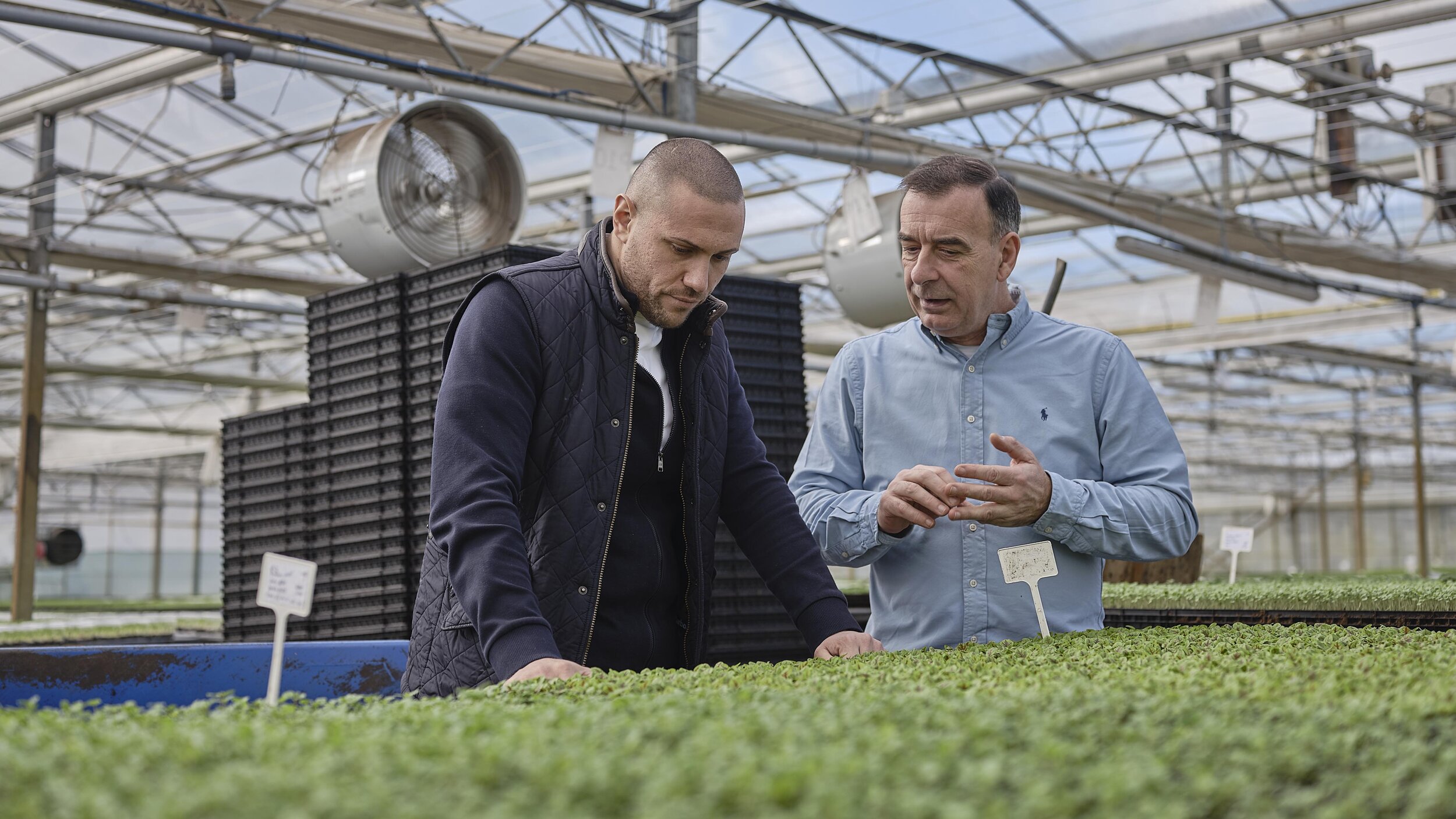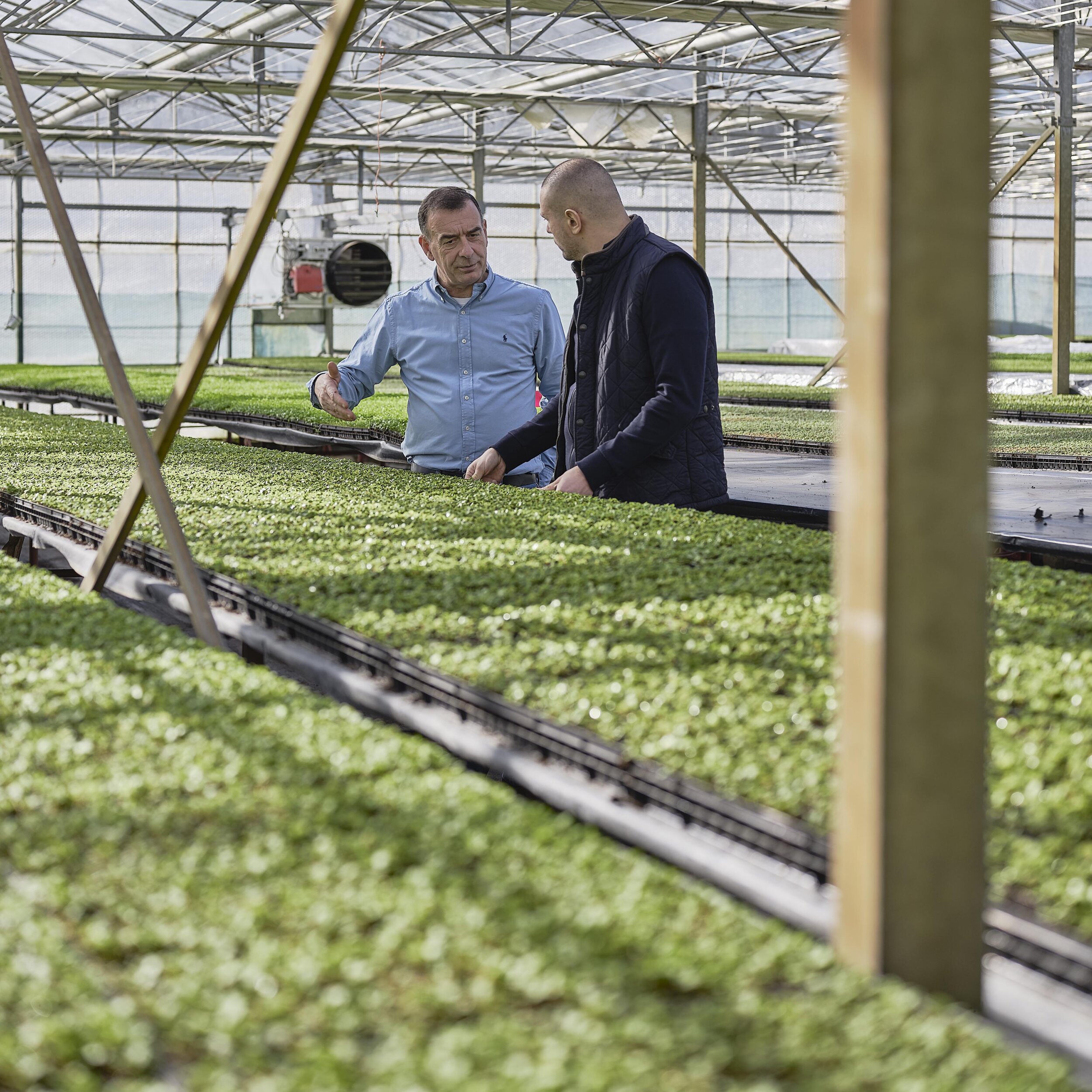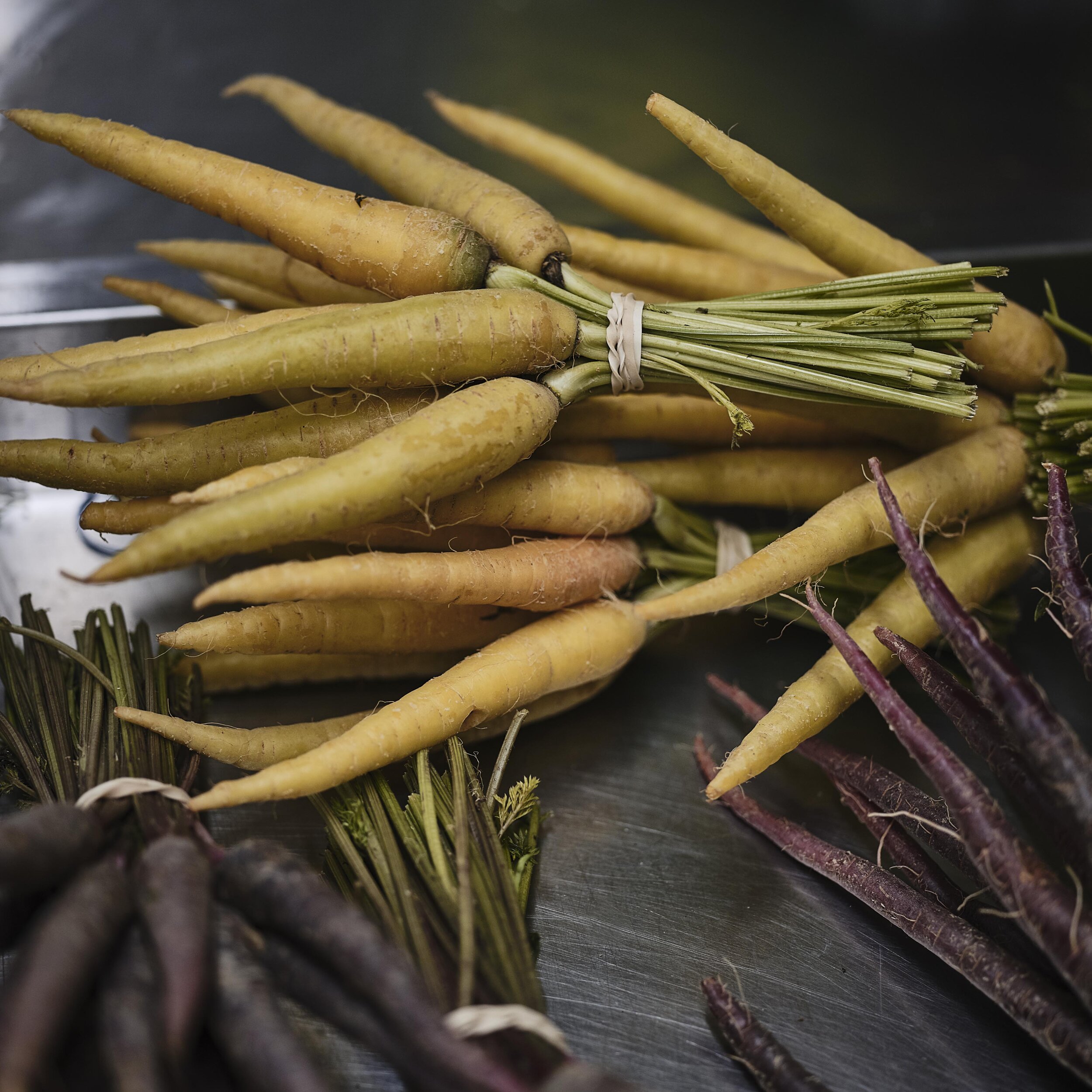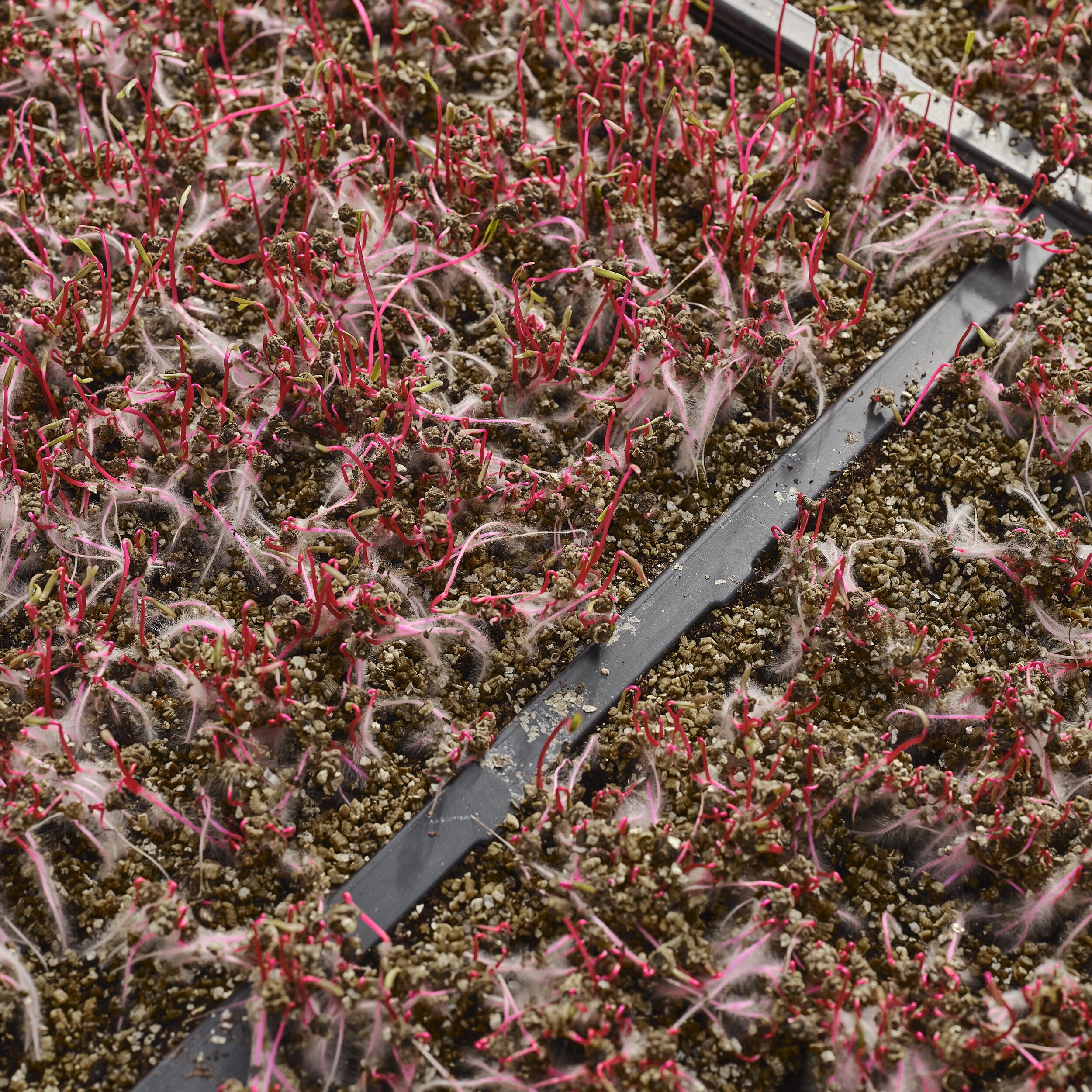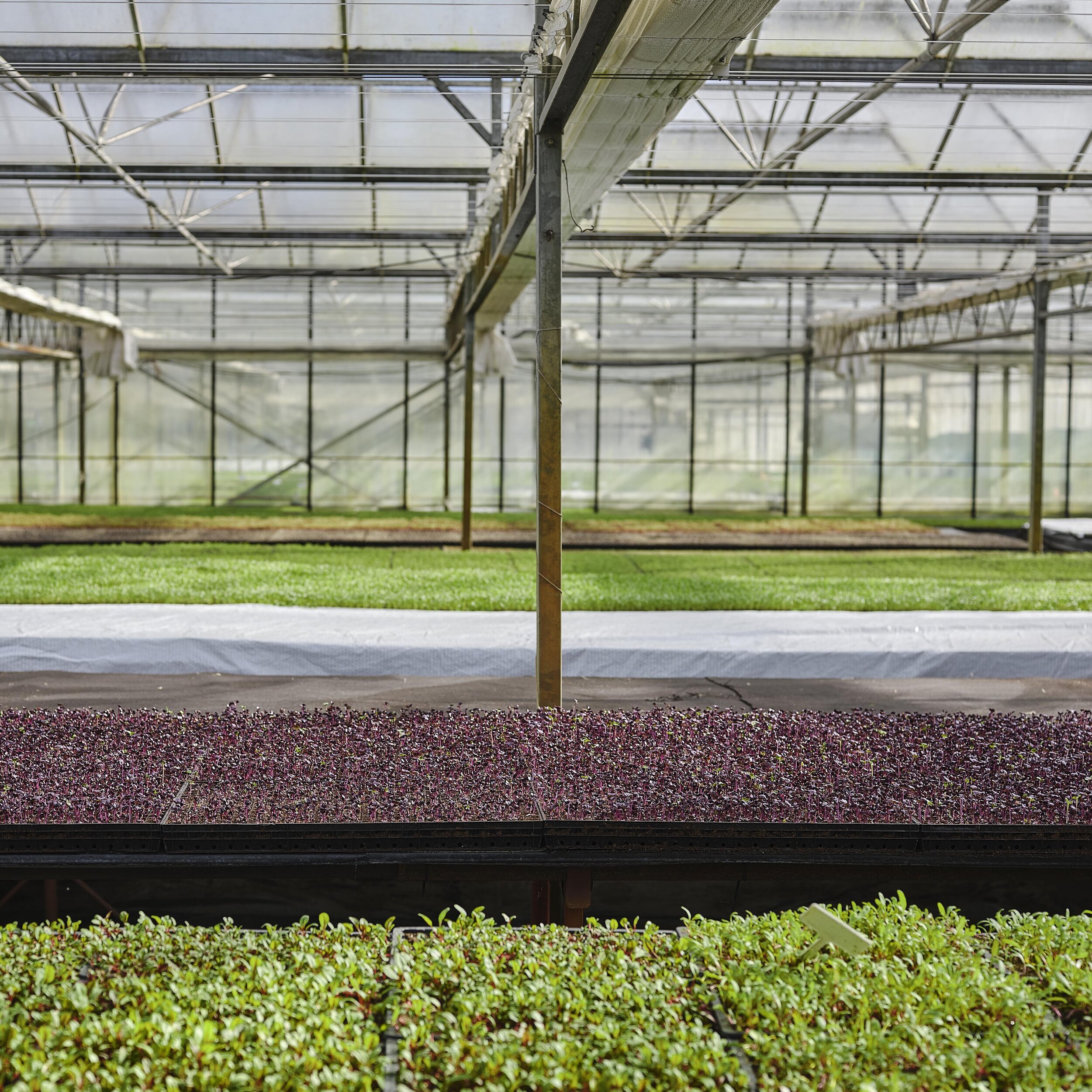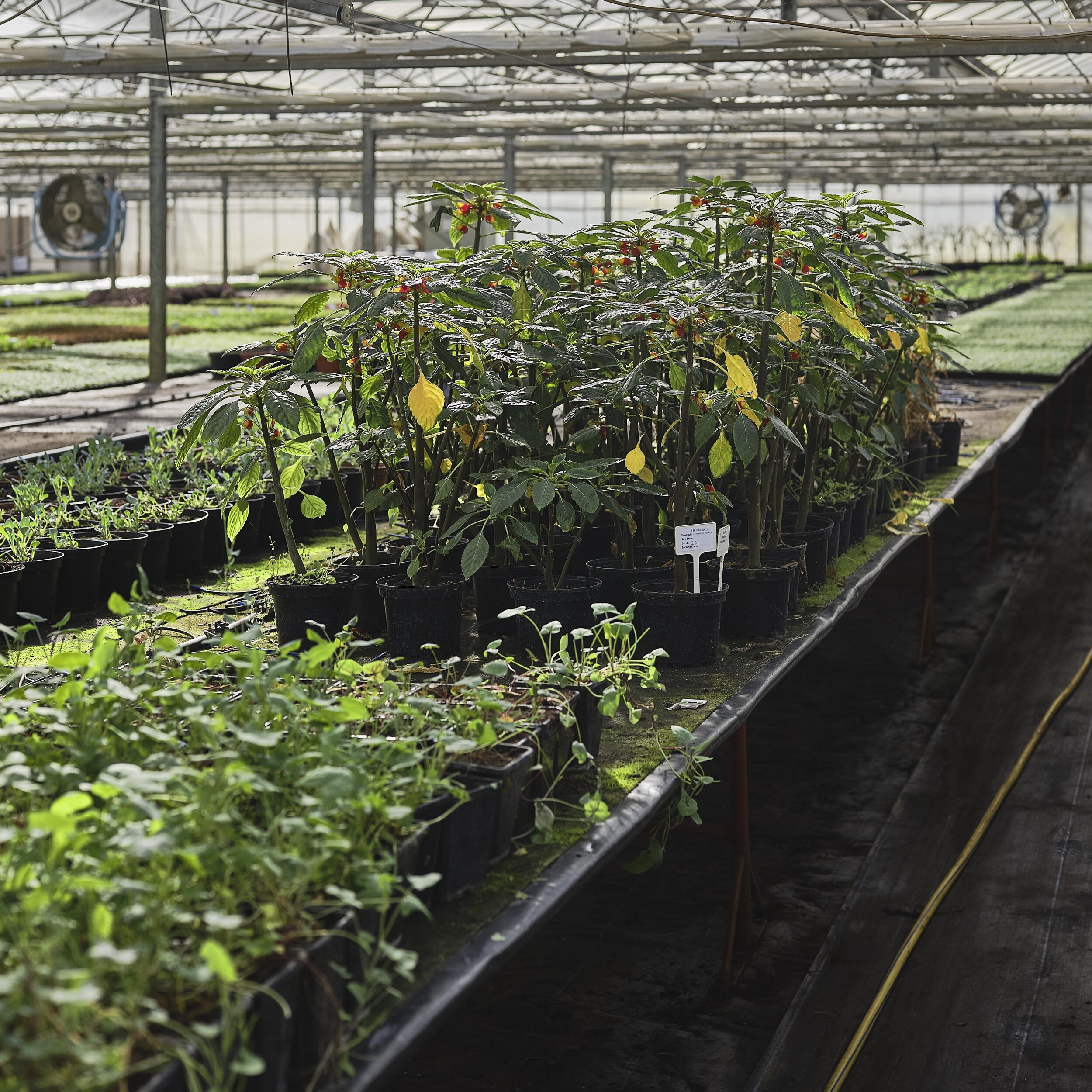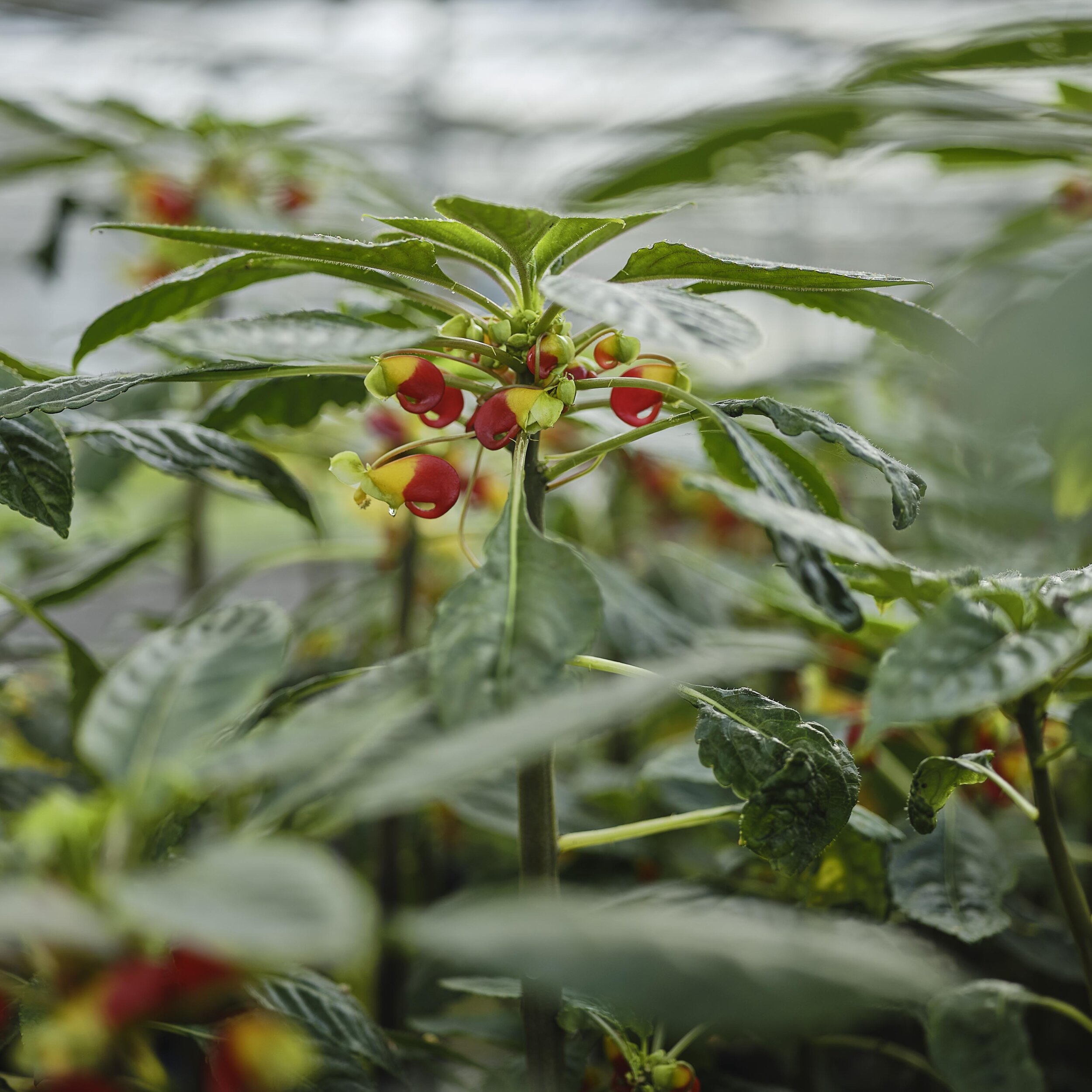Source materials
The Journal hits the road with Carlo Scotto of Xier to visit two of the farms that supply him and discover why the creation of a great menu doesn’t start in the kitchen
Words: Viel Richardson
Images: Orlando Gili / Viel Richardson
“You want it to be a rollercoaster of flavours and emotions,” says Carlo Scotto, chef proprietor of Xier, explaining his approach to creating a tasting menu. “This is sharp. This is sour. This is sweet. There is something here I can’t quite place.” It should be, he continues, a journey with excitement and surprises, twists and turns. “You want the diner’s taste buds to be on the edge with anticipation as well as satisfaction. When the meal is finished, they should feel that they have been guided through a wonderful experience.”
When Carlo speaks about food, which he does a lot, he draws you deep into the warm, colourful world of his culinary imagination—a feeling entirely at odds with the scenes unfolding in the real world around us. It’s a few weeks before lockdown will change everything, and we are in a car heading to East Anglia to visit one of his suppliers. It’s early in the morning, still dark, and the weather is, quite frankly, grim. As we drive, Carlo expands on his approach to cooking and why he often takes time out of his busy schedule to visit the producers whose ingredients he uses. “It’s fascinating to make these trips. I get to understand much more clearly where the products are coming from and what it takes to produce the level of ingredients I need to cook the way I do.”
Dan Barber, the American chef, journalist and vocal campaigner for agricultural reform, wrote in his book The Third Plate: “Whenever you work your way backwards from a really delicious plate of food you always end up with great farmers, using good farm practices.” It is a view with which Carlo wholeheartedly agrees. “Great food starts long before I see an ingredient,” he says. “My food is about the farmer, the supplier, as well as my chefs and the front-of-house staff. Some people—including some chefs—think that the creativity and invention starts in the kitchen. But this is not the case.”
Healthy pastures
When we eventually arrive at our destination, Poplar Farm, it feels a long way from Marylebone. We are met by the farm’s owner, Paul Hammond. As we trudge through the mud to see his hereford and aberdeen angus cows, the first thing he does is apologise for the conditions—the result of several weeks of rain. “The cows would normally be outdoors, but we have had to bring them in to keep them healthy,” says Paul, the fifth generation of his family to run this farm (his son is shaping up to be the sixth). “We try to keep the cattle out on the grass for as long as possible, but the ground is so sodden that we have had to bring most of them inside. We have a few hardy breeds that are alright in this weather, but not all can cope.”
The move is also needed for the health of the pasture. “We have really good grass here. It’s one of the reasons we can produce high quality meat, but we have to take care of it. If we let the cows out into the fields while the underlying soil is this wet, they could churn whole pastures up and it could take the grass two years to recover.” One of the things Paul’s family has focused on for generations is the cultivation of grass—an aspect of livestock farming that often goes unseen by the wider public. Weather permitting, the cattle will spend two summers out on the grass. In the winter they are fed on ‘haylage’, made by fermenting straw in big black plastic sacks. “The haylage helps develop the marbling of fat through the meat that the chefs want.”
This guarantees the best of both worlds: the grass contributes to a wonderful depth of flavour and the fat that develops as a result of the haylage keeps the meat tender while cooking. “We have a moral duty to give the animals the best life we can, but there are financial considerations as well,” Paul explains. “It is a cliché, but livestock that has enjoyed a good, stress-free life produces better meat. Healthy cattle need room to move around, plenty of fresh air and some shelter.” Carlo asks if all the beef he buys comes from cattle born on the farm. Paul says that some calves are brought in from trusted breeders, a practice that helps keep the gene pool large and the herd healthy. “These are the stories that I think should be more widely known,” says Carlo, as we drive back to Xier for evening service. “The fact that five generations of Paul’s family have farmed there has an almost physical presence; you can feel his attachment to the animals and the land. Hearing about things like the haylage, understanding where the flavour is coming from, is great.”
Aroma, depth and visual impact
A few days later, Carlo and I are on the road again. This time, on a mercifully sunny day, we find ourselves standing in a large, bright greenhouse surrounded by flat trays. Nurtured in Norfolk, another of Xier’s suppliers, produces micro-herbs, regular herbs, edible flowers and baby vegetables. “We started in my back garden, growing micro-herbs in the garden shed for the restaurant where I worked at the time,” says Alan Miller, who co-founded the company with wife Sue in 2010. “The feedback we got was amazing. The waiters were coming back saying that the customers were loving the herbs. We knew we were on to something.” Now the company grows a wide range of products, informed in part by Alan’s previous life as a chef. “It’s about understanding what might be useful to chefs,” he explains. “For example, the amaranth flower wasn’t really a commercial product when we started. But I remember seeing it flowering and thought, chefs might like that. And they did. Now it is a great seller for both chefs and bar managers.”
Unlike many large-scale producers, which use hydroponic systems, Nurtured in Norfolk grows its produce in soil. “Our primary concern is the flavour profile of what we grow: its aroma, depth and visual impact,” Alan says. “That is why we grow in soil, despite the problems with pests, fungus, diseases and crop failures that growing this way creates. There is a complexity about the relationship between plants and the soil that we don’t fully understand, but I firmly believe it gets the best results. Growing in soil allows the plants to take what they need when they need it. For me, this is preferable to creating a feed recipe which tries to replicate it in hydroponic growing systems.”
Growing such a wide range of plants has meant trying to find a growing medium that meets many different demands. “It took us a long time to find the system that we have now. You will never find something that will fulfil all of your desires, but the majority of plants thrive in the soil we now use,” Alan explains. “Even so, we have to intimately know the dynamics of each greenhouse: the lie of the land, where the sun is at particular times of the year, the highest and lowest points it reaches in the sky, where it rises and sets, where the hottest and coolest parts of the greenhouse are at peak times of the day. We have to make sure each tray is in the best conditions for the plant growing in it.” The growers in the greenhouses essentially play a giant game of Tetris. It’s time consuming and difficult, but Alan says it’s worth it. “Ultimately I have to be true to myself as a chef, so every growing decision we make is driven by the quality of the product.”
How far can you push?
Back in Xier’s kitchen, Carlo talks me through the dish on his tasting menu that features produce from the two farms we have visited: beef cheek, pickled beetroot, collard greens and bone marrow. It is a simple-sounding combination—just a few ingredients on a plate—but in the world of fine dining, simple is a world away from easy. “The beef cheek is braised with Italian red wine for eight hours on a very low temperature,” Carlo explains. “The bone marrow is slightly cooked; the toasted breadcrumbs seasoned with orange, lemon and anchovies. The sauce is a reduction, made using the liquid the beef has been braised in, with added grapes to give some sweetness.”
On the side of the dish is a bouquet made of Alan’s edible herbs and flowers. “I wanted to give the customer a way of mopping up sauce without using bread. You eat the whole thing—it is very fresh, aromatic and complements the sauce. It has been a real success. In fact, we have had people asking the waiting staff if they could have another bouquet before the end of the meal.” The key thing here is that the herb bouquet is not treated as an extra. Carlo loved the idea, but it had to earn its place on the plate in terms of flavour and texture, as well as being useful and bringing a sense of fun.
When I ask where the idea for the dish came from, Carlo ponders his answer for nearly a minute. “To answer that, we have to look at the whole tasting menu because everything is connected. The menu celebrates cultures from different parts of the world. Beef represents Great Britain,” he explains. “We thought of other produce, but we always kept coming back to the beef. And it is where the hard work starts.” The beef was initially braised for two hours, but the texture was not what the chef wanted, so he tried it for five, seven and eight hours. “At this point it was actually falling apart. I didn’t need the knife to cut it, but the meat was still pink inside. Thinking out of the box for me is the only way to achieve something new. For a future dish I might try 10 hours.” For a moment, as he imagines what that 10-hour braise would be like, it’s almost like I’m not there. “There is so much to discover. I think we maybe understand 10 per cent of what there is to know. How does it react to different techniques? What combinations work? How far can you push something?”
Real gratification
There is a poster on the wall in the kitchen at Xier that includes the phrase: “Love and passion are for the family. My cooking is about obsession!” As Carlo explains the development of the beetroot component of the dish, that poster sounds increasingly apt. “We cooked the beetroot and pickled it in different ways. I found a pickle I liked, but wanted more from it. I decided to put it through a juicer, then make a fluid gel from the juice. I liked the result but it wasn’t there yet, so I blended the gel into a puree. At one point I laid out all the different stages of the beetroot preparation for the chefs to taste and the pureed gel was the unanimous winner. That is what appears on the final dish. There were so many trials along the way, but it was worth it for the end result.”
With so much work going into one aspect of one dish on a 10-course menu, it is easy to see why the quality of ingredients is so important to chefs like Carlo. After all, you are not going to put in all that effort for just any old beetroot. “Cooking should be a constant evolution of the relationship between the techniques and ingredients. Why can’t I pickle, puree and gel the same thing? It is very experimental and I can promise you that sometimes our results are awful. But experimentation with techniques and ingredients is the only way you progress and develop your own style.”
Carlo plates up the dish and lays it on the table in front of me. It smells delicious and looks hugely tempting. It strikes me just how many people have worked incredibly hard to produce this delicate offering. In the world of fine dining, the food on a plate is only the tip of the iceberg. “We must never forget that the diner is at the heart of everything,” Carlo says as the photographer snaps away. “The goal is to give them the best experience possible. It is about showing respect for everyone who walks through the door. An empty plate and a happy customer is where I find real gratification.”

